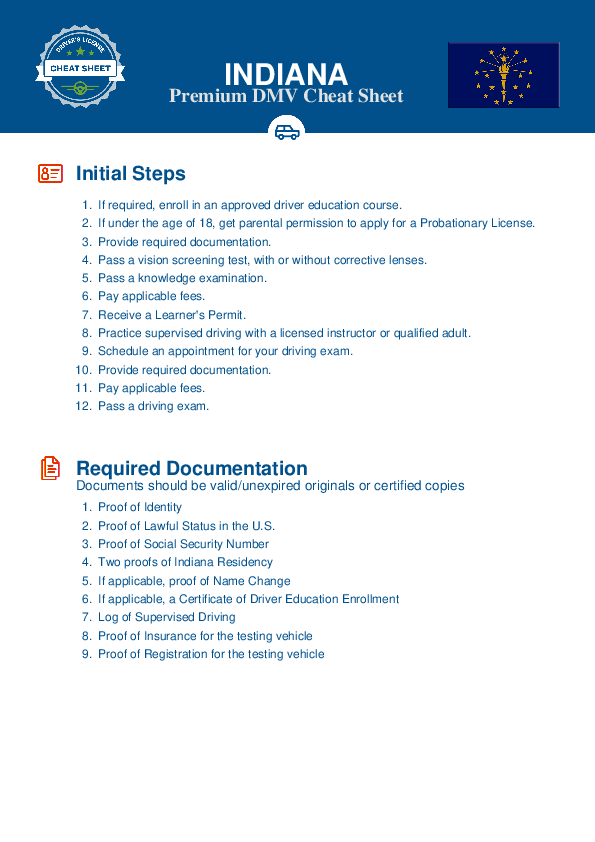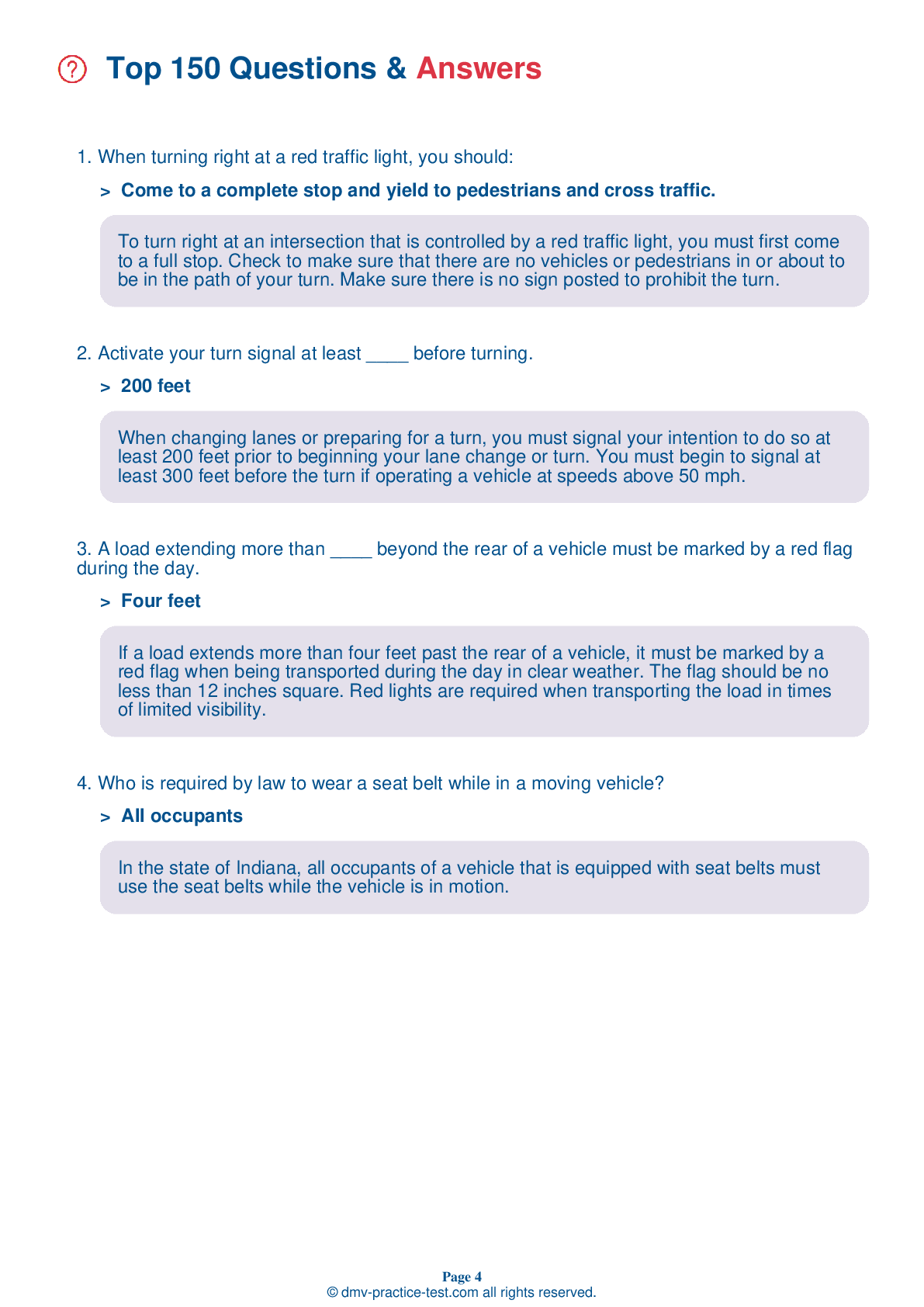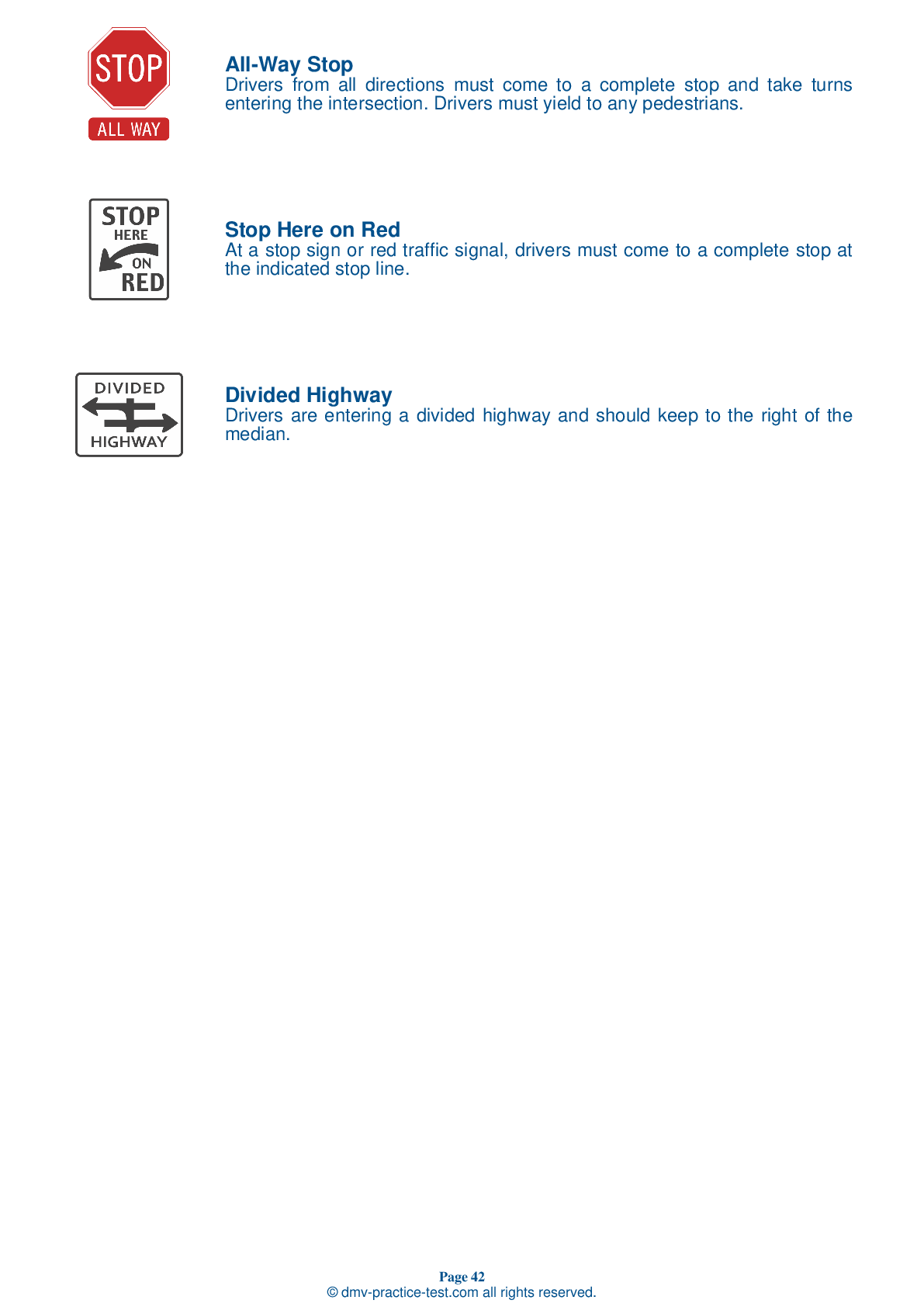FREE Indiana DMV Practice Test #1
This set of Indiana DMV practise tests has been updated for January 2025. It includes questions based on the Indiana Driver Handbook's most significant traffic signals and laws for 2025. Use actual questions that are very similar (often identical!) to the DMV driving permit test and driver's licence exam to study for the DMV driving permit test and driver's licence exam.
On the practise exam, each question gets a tip and explanation to help you remember the concepts. The written component of the official Indiana DMV test will include questions about traffic rules, traffic signs, and driving statutes, as well as information from the Driver Handbook.
To obtain a passing grade, you must correctly answer 44 of the 50 questions. Take our DMV practise exam to help you prepare for your Indiana instruction permit or driver's licence.
The DMV exam is available in several languages.
Using any kind of testing assistance will result in an automatic fail, and the DMV may take additional action against your driver's licence, so stay away from it.
1 . If an officer is directing traffic at a working traffic light, drivers should:
Traffic signals are placed at intersections to keep traffic moving and to help prevent crashes. Drivers, pedestrians, and cyclists must obey these signals, except in instances when an officer is directing traffic.
2 . If you are driving near a motorcycle, you must:
A motorcycle is a full-size vehicle with the same privileges as any other vehicle on the roadway. You should allow a motorcyclist a full lane width. Although it may seem as though there is enough room in the traffic lane for a larger vehicle and a motorcycle, remember that the motorcycle needs room to maneuver safely.
3 . A driver approaching a flashing red traffic signal must:
A flashing red light means that you must stop, yield to traffic and pedestrians, and go only when it is safe. At a railroad crossing, a flashing red light indicates that a train is approaching. Yield to the train, and go only when the lights have stopped flashing and all other active warning devices deactivate.
4 . A slow-moving vehicle emblem is:
The slow-moving vehicle symbol is a reflective orange triangle. Expect vehicles using this emblem to be driving at speeds of 25 mph or slower.
5 . As you drive, you're required to stop your vehicle:
Situations where motorists are required to stop include approaching intersections with stop signs, approaching intersections where a red light is either flashing or illuminated, or any time when a traffic officer orders your vehicle to stop.
6 . This sign means:

Warning signs prepare drivers for upcoming road conditions and hazards and are usually yellow with black markings. This sign tells drivers that there is an upcoming stop sign and that they should prepare to come to a complete stop before proceeding.
7 . If you reach an intersection where you wish to turn but you are not in the proper lane, you should:
Never make last-minute turns. If you reach an intersection where you wish to turn but you are not in the proper lane to make the turn, drive to the next intersection and then make the turn from the proper lane.
8 . A person walking with a white cane or guide dog is likely to be:
Drivers must always yield the right-of-way to a pedestrian when the pedestrian is a blind person who is using a white cane or guide dog.
Need Car Insurance? No problem!
Compare the best rates in Indiana and find a personalized policy that meets your needs.
1. Are You Currently insured ?
2. Married ?
3. Do you own your Home?
4. Do you have more than 1 car ?
5. Have you or a Family Member Honorably Served in U.S. Military ?
6. Your Name
7. Age
8. Zip code
IMPORTANT REMINDER:Auto Insurance is Mandatory to drive in Indiana. Get covered before you hit the road to avoid any fines.
Ranked by best match



